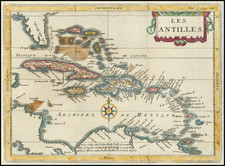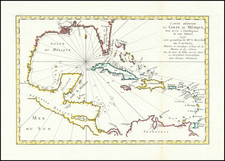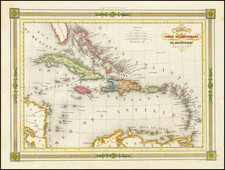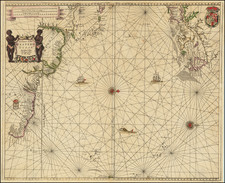Extremely rare chart of Grand Cayman Island, based upon an original survey by George Gauld in 1773, with later revisions and corrections by De Mayne.
George Gauld first visited and surveyed Grand Cayman in 1773, producing a map of the island. While his survey exists in manuscript, it was never printed and the earliest printed map of the island was done by A. De Mayne in about 1816. OCLC notes a single copy of a Gauld map of Grand Cayman entitled "The Island of Grand Cayman, Surveyd by G. Gauld 1773," and dated 1815. A french manuscript map of Grand Gayman dated 1803 is also held by the Bibliotheque National de France. Systematic hydrographic surveys of Grand Cayman were not completed until undertaken by the Royal Nay in the 1880s.
Gauld originally landed in Bodden Town, which was then known as "South Side." Because its natural harbour, Bodden Town was attractive to both merchant and trading ships as well as Caribbean pirates. When Gauld first arrived,the town's population was approxiamtely 200-roughly half the population of the entire island. Gauld noted the majority of residents had the surname, "Bodden", all descendants of Isaac Bodden, a soldier from Cromwell's army.
This map is of the utmost rarity. We were not able to locate any other examples of the map in OCLC or otherwise.
Moreover, there are no auction records for any separate map of Grand Cayman Island and no dealer records showing a Grand Cayman map in AMPR or Americana Exchange prior to 1850 and only a single Spanish Chart of 1877 is listed by AMPR (offered by John Faupel in 1987).
The Dépôt de la Marine, known more formally as the Dépôt des cartes et plans de la Marine, was the central charting institution of France. The centralization of hydrography in France began in earnest when Jean-Baptiste Colbert became First Minister of France in 1661. Under his watch, the first Royal School of Hydrography began operating, as did the first survey of France’s coasts (1670-1689). In 1680, Colbert consolidated various collections of charts and memoirs into a single assemblage, forming the core of sources for what would become the Dépôt.
The Dépôt itself began as the central deposit of charts for the French Navy. In 1720, the Navy consolidated its collection with those government materials covering the colonies, creating a single large repository of navigation. By 1737, the Dépôt was creating its own original charts and, from 1750, they participated in scientific expeditions to determine the accurate calculation of longitude.
In 1773, the Dépôt received a monopoly over the composition, production, and distribution of navigational materials, solidifying their place as the main producer of geographic knowledge in France. Dépôt-approved charts were distributed to official warehouses in port cities and sold by authorized merchants. The charts were of the highest quality, as many of France’s premier mapmakers worked at the Dépôt in the eighteenth century, including Philippe Bauche, Jacques-Nicolas Bellin, Rigobert Bonne, Jean Nicolas Buache, and Charles-François Beautemps-Beaupré.
The Dépôt continued to operate until 1886, when it became the Naval Hydrographic Service. In 1971, it changed names again, this time to the Naval and Oceanographic Service (SHOM). Although its name has changed, its purpose is largely the same, to provide high quality cartographic and scientific information to the France’s Navy and merchant marine.









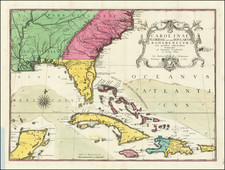
![[Heighted with Gold] Pascaert Vande Caribes Eylanden](https://storage.googleapis.com/raremaps/img/small/91150.jpg)
